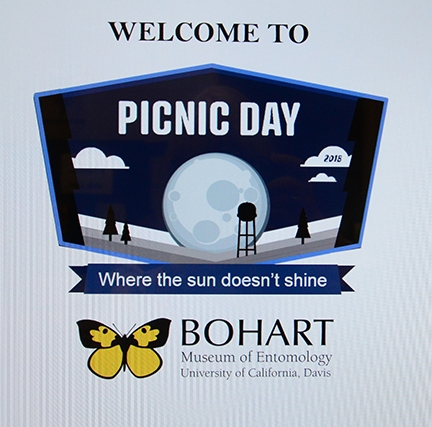
Who wouldn't, when you get an opportunity to pet a rose-haired tarantula named Snuggles, guide walking sticks "strolling" on your arm, or cradle a Madagascar hissing cockroach? Or marvel at the display of Platypsyllus castoris, an ectoparasite of beavers?
That's what awaited the 2000 visitors at the Bohart Museum of Entomology during the 104th annual UC Davis Picnic Day last Saturday, April 18.
Although the theme of the campuswide Picnic Day spanned "Where the Sun Shines," Bohart Museum officials focused on "Where the Sun Doesn't Shine." They highlighted nocturnal insects, cave-dwelling insects, and parasites, including a beetle, Platypsyllus castoris, found on the south end of a beaver.
Lynn Kimsey, director of the Bohart and professor of entomology at UC Davis, kept busy answering questions about the beaver display--a pelt, and a graphic of the beetle.
As Bohart Museum associate and undergraduate entomology student Wade Spencer said: "These beetles look like they are to fleas what halibut are to other fishes. Instead of the lateral compression fleas exhibit, Platyspyllus castoris are dorso-ventrally flattened, which only adds to their alien appearance. Their unique feeding and lodging preferences have given us so many good laughs, we wanted to make them the star of this year's picnic day event at the Bohart."
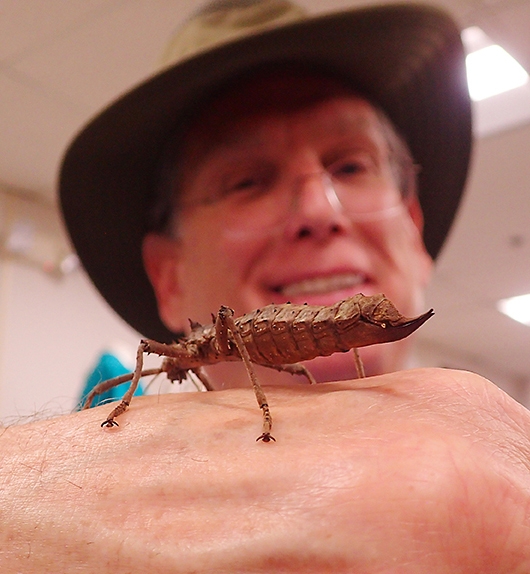
Entomologist Jeff Smith, who curates the butterfly and moth collection at the Bohart, kept busy encouraging visitors to get acquainted with Snuggles. They held him, petted him and photographed him. Little Teddy Owens, 2 of Davis, held by his mother, Dina, high-fived Snuggles.
Another display featured scorpions: graduate student Charlotte Herbert shone a black light on them to illustrate how they glow in the dark. All scorpions fluoresce in ultraviolet light.
Visitors also learned about bees in a display featuring sweat bees, leaf-cutting bees, mason bees, bumble bees, honey bees, sunflower bees, and carpenter bees, as well as Andrena and Melissodes anthophora.
The Bohart Museum houses a global collection of nearly eight million specimens. It is the home of the seventh largest insect collection in North America, and the California Insect Survey, a storehouse of the insect biodiversity. Special attractions include a “live” petting zoo, featuring Madagascar hissing cockroaches, walking sticks, praying mantids and tarantulas. The museum's gift shop, open year around, offers T-shirts, sweatshirts, books, jewelry, posters, insect-collecting equipment and insect-themed candy.
The Bohart Museum is open to the public from 9 a.m. to noon and 1 to 5 p.m. Mondays through Thursdays. It is closed to the public on Fridays, Saturdays and Sundays and on major holidays. Admission is free.
More information on the Bohart Museum is available by contacting (530) 752-0493 or emailing bmuseum@ucdavis.edu or Tabatha Yang at tabyang@ucdavis.edu.
Attached Images:
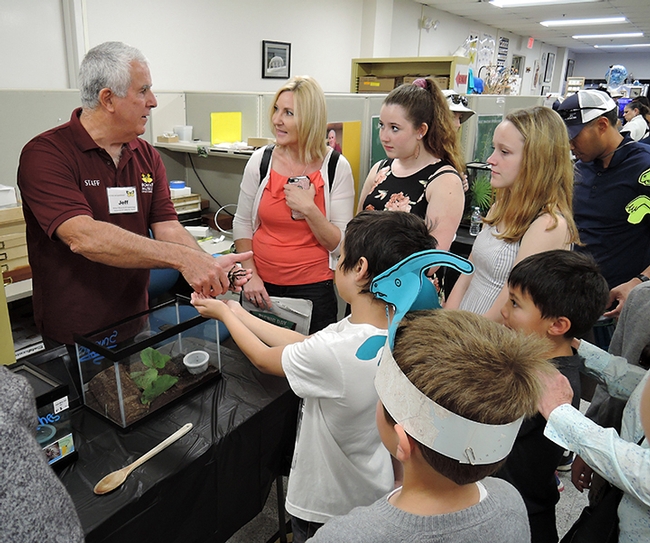
Entomologist and Bohart associate Jeff Smith introduces a crowd to Snuggles, a rose-haired tarantula. (Photo by Kathy Keatley Garvey)

Two-year-old Teddy Owens of Davis, held by his mother, Dina Owens, high-fives Snuggles, the rose-haired tarantula, held by entomologist and Bohart associate Jeff Smith. (Photo by Kathy Keatley Garvey)
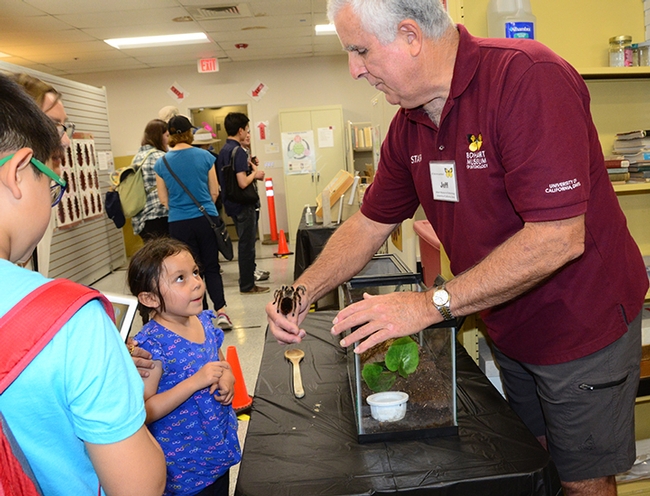
Bohart associate Jeff Smith shows Snuggles, a rose-haired tarantula, to inquiring youngsters. (Photo by Kathy Keatley Garvey)
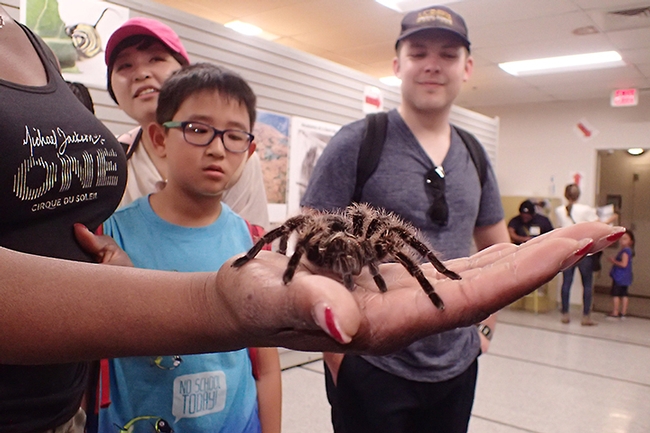
Quite a handful! Visitors at the Bohart Museum of Entomology's open house on Picnic Day watch Snuggles, a rose-haired tarantula. (Photo by Kathy Keatley Garvey)
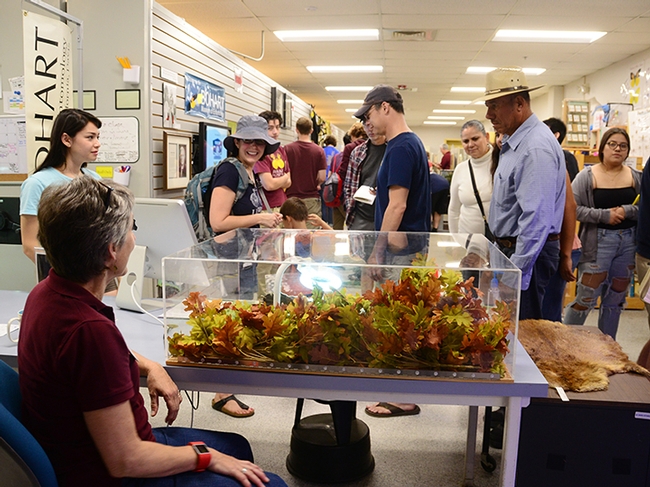
Visitors check out the beaver/beetle display at the Bohart Museum of Entomology. In the foreground is Lynn Kimsey, museum director and UC Davis professor. At far left is undergraduate student Ivana Satre. (Photo by Kathy Keatley Garvey)
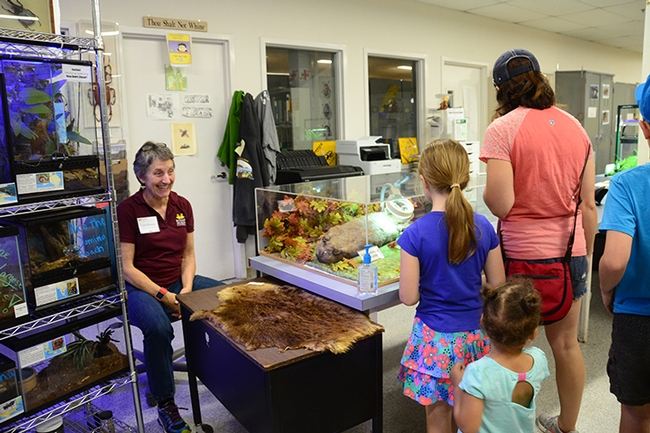
Bohart Museum director Lynn Kimsey smiles at the reaction of visitors to the beaver/beetle display. (Photo by Kathy Keatley Garvey)
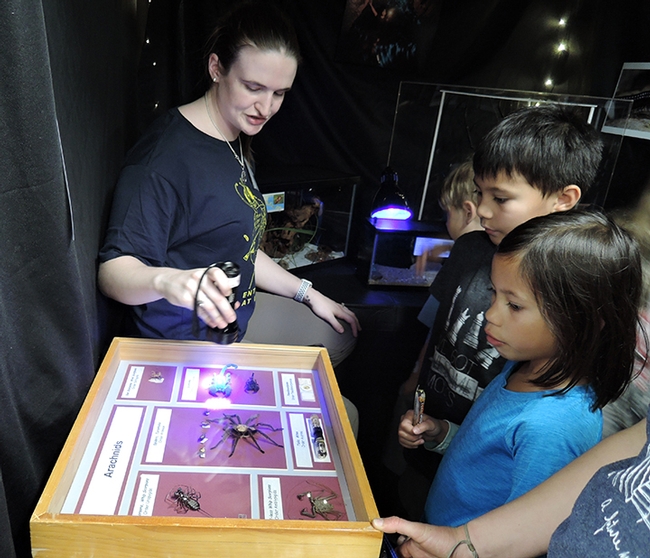
UC Davis entomology doctoral candidate Charlotte Herbert shows youngsters how scorpions fluoresce under ultraviolet light. (Photo by Kathy Keatley Garvey)
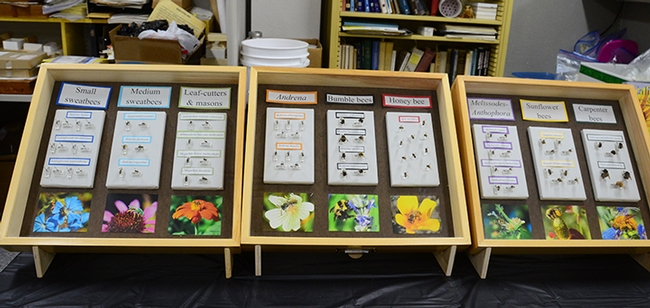
The bee display encompassed honey bees, bumble bees, sweat bees, sunflower bees and more. (Photo by Kathy Keatley Garvey)